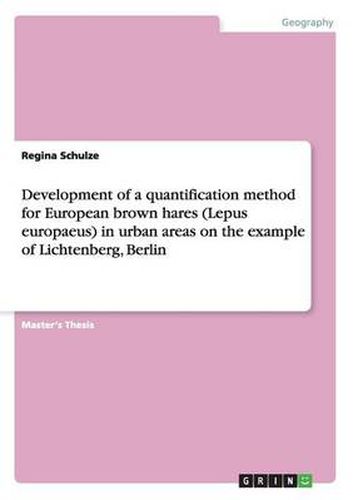Master’s Thesis from the year 2011 in the subject Nature Protection, Landscape Conservation, grade: 1,3, Christian-Albrechts-University of Kiel (Institut fur Natur- und Ressourcenschutz Abteilung Landschaftsoekologie), course: Environmental Management, Umweltmanagement, language: English, abstract: The stock of the European brown hare (Lepus europaeus PALLAS, 1778) is declining since decades, in Germany as well as in other European countries.At the same time, the occurrence of European brown hares is a new phenomenon in urban areas. Hence, Lichtenberg, a city district of Berlin, the capital of Germany, even assumed a special responsibility for its new inhabitants. Whereas a method for the quantification of this common game species in agricultural areas already exists, a new quantification method for city habitats is required in order to overcome several limitations. The aim of this master thesis is to deliver a suitable quantification method for Lepus europaeus, which can be applied by nature conservation authorities in future. By means of a strong LED torchlight and a bike, 153.74 ha of green area, which is usually scattered between residential buildings, were investigated in the style of the previous spotlight taxation . These investigated areas belong to five different tracks. Each track was investigated three times in the late evening hours in the spring period from 8th of March until the 25th of April 2011. Within this time 37 sightings of hares have been made. Summing up the five maximum values from each of the 3 countings, one could assume that at least 17 hares live within the illuminated area. Considering the territorial behaviour, even a minimum number of 19 hares is probable. If additionally only suitable tracks are taken into account, a density of 16.98 hares/100 ha can be calculated - a surprisingly high value compared to the results of spotlight counting in surrounding federal states, where the agricultural landscape, and therefore the natural habitat o





